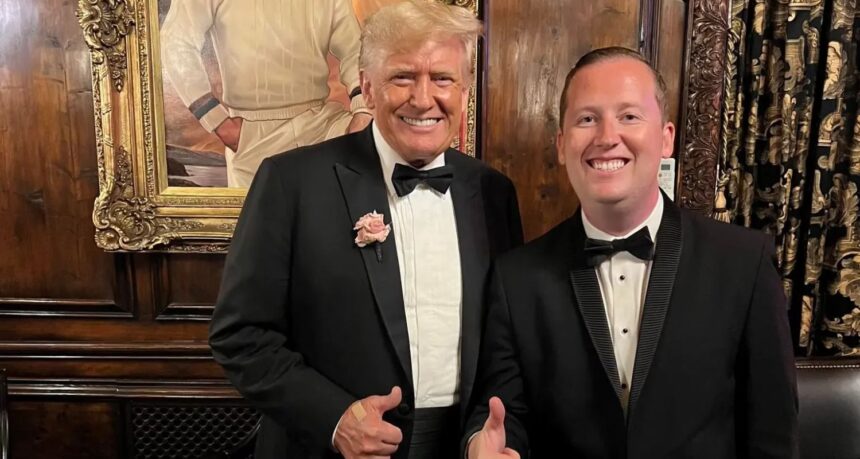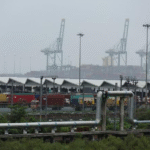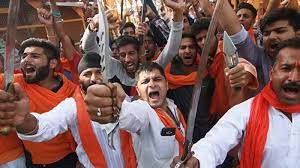Trump’s Envoy to India: Sergio Gor Appointment Deepens Modi’s Diplomatic Bind
India-US relations are in a ‘chakravyuh’ and the Trump administration has just made it even more difficult to break out by appointing Sergio Gor as Ambassador to India.
Trump may see the appointment of Gor as a special favour to his ‘friend’ Prime Minister Narendra Modi; after all, the ambassador-designate is one of his closest aides and will have a direct line to the White House. But his concurrent designation as Special Envoy for South and Central Asian Affairs is more of a double-edged sword swung by an increasingly incoherent administration. India may actually want to consider whether a direct line to the Great White Chief would be a blessing or a curse.
At present, New Delhi is teetering on a tight rope being shaken by US-Russia-China geopolitical dynamics. As a rising power with aspirations for global influence, India confronts a landscape where the US seeks to counter China’s rise, Russia wants to overawe Europe through its war in Ukraine and an incipient US-China rivalry in the trade, technology, and security domains continues to grow.
In the coming period, we will see how this will play out as Prime Minister Modi visits China for the SCO summit between August 31-September 1 and holds talks with Xi, then welcomes President Putin in India for the annual India-Russia summit and meets President Trump either at the planned Quad summit in New Delhi later this year or, when he visits New York in September to address the annual UN General Assembly meet.
It is important to note that these meetings are not really linked to each other. All three summits have been in the works for the past year, well before Trump took office. But all of them will now, without doubt, be affected by global policy turmoil wrought by his new policies and actions.
This is a situation of both danger and opportunity for New Delhi and it underscores the value of pursuing strategic autonomy rather than alignment with any single pole. Recent developments – such as the fallout of Op Sindoor and tariff-led estrangement with the US – have intensified contrary pressures. On one hand, we see the erosion of India’s benefits from closer US ties, on the other, new doors have opened to reinforce an old relationship with Russia or a pragmatic engagement with China.
Key dynamics shaping India’s role
The foundation of the US-India connect that developed in the mid-2000s has been based on the convergence of their views in seeing each other as a counterweight to China. India’s participation in frameworks like the Quad, and the expansion of the erstwhile Indo-US Malabar exercise to include Australia and Japan were an indicator of this. Expectations were that Trump’s second term would reinforce these developments and build on them. Instead, in 2025, Trump’s policies – his move towards Pakistan in an indirect rebuff to India and the 25-50% tariffs on Indian goods for Russian oil purchases – have strained US-India relations to the breaking point.
The rift with the US is not just about trade but also carries the risk of reputational damage for Modi. Having often highlighted his friendship with Trump, Modi was among the first world leaders to visit Washington. Reports suggested that India had already signaled a willingness to lower certain tariffs on US exports. At the same time, New Delhi refrained from challenging Trump’s immigration policy and even agreed to accept deported migrants, despite the humiliating circumstances in which they were returned.
However, tensions escalated when Trump claimed credit for brokering a ceasefire between India and Pakistan and pressed India for concessions in agriculture and dairy. These demands proved to be a red line for Modi, who strongly rejected Trump’s assertions on the ceasefire and firmly dismissed tariff concessions in the agricultural sector.
By itself, a Gor ambassadorship could have repaired the damage to India-US relations. He is, after all, one of Trump’s closest aides. But, Gor is concurrently Special Envoy to two key regions – South and Central Asia. A positive spin to this could be that Trump wants New Delhi to be the key location for US diplomatic oversight of the region. It could also imply a shift in the centre of gravity of America’s India policy away from the Indo-Pacific towards Pakistan and Central Asia. Or it could simply mean that Gor lost out in the White House’s political race and has been exiled far away to a country he is not familiar with.
Anyway, New Delhi is likely to see it as an effort to hyphenate Indian policy with Pakistan, since by his mandate, Gor will interact with the region’s ambassador and coordinate US policy for the region. This is something that New Delhi has strenuously resisted since the Kargil conflict. In 2009, when Richard Holbrooke was appointed South Asia envoy by the Obama Administration, New Delhi lobbied to get his title changed as “special representative for Afghanistan and Pakistan,” and ensure that neither India, nor Kashmir was part of his brief.
All this has been happening even as renewed vigour is apparent in the India-Russia relationship. Ties with Moscow go back to the 1950s and 1960s and have featured strong links in the area of defence. Since the Ukraine war, however, India has gained enormously from the purchase of some 37-40 % of Russian oil exports at discounted prices. Significantly, as the Trump administration targeted this purchase, India continued its purchase, buying some 2 million barrels per day (bpd) in August, up from 1.6 bpd in July. Equally, significantly, Russian defence equipment – the Brahmos, a co-developed supersonic missile, and the S-400 surface to air missile system played a stellar role in the 4-day war with Pakistan in May.
Meanwhile, a process of détente is underway between India and China. They have worked to undo the effects of the 2020 Galwan clash and are now in the process of normalising their relations by undoing restrictions on trade and investment, tourism, and so on. All through the recent years, India has remained a major trade partner of China, though this trade is heavily tilted in favour of Beijing. Issues related to the border continue to limit their ties, as does the Chinese relationship with Pakistan which was visible during the recent war.
The interplay of issues has created a mix of risks and opportunities. There is a possibility of short-term economic disruption arising from American tariffs, but there is also the path to longer-term strategic flexibility if managed adeptly. US tariffs could cost India billions in exports, exacerbating trade imbalances and negatively affecting its economic growth.
Options for India
For India the best path remains its posture of strategic autonomy and balancing its relations with the big three global powers. This is essentially the reiteration of non-alignment in the form of multi-alignment.
It is important to emphasise that India will continue engaging with each of its big power partners without exclusivity. So, the goals of the Quad remain as important as that of the BRICS and SCO. But all this pre-supposes that policy-makers in Washington see things India’s way. Given the difficulties India is having with the US on Pakistan and tariffs, can it isolate its Quad relationship from the buffeting?
It is practical to acknowledge that India possesses little leverage against the US. With Russia, it can use the negative leverage of shifting away from defence and oil purchases, but that would be akin to putting the axe to your own foot.
However, the situation also acts as an incentive for India to undertake second generation reforms that would boost Indian manufacturing and encourage diversification of its trade. Warming ties with China could result in the easing of restrictions on Chinese capital and technology to offset the US loss. There are also reports that India may reconsider its decision to stay out of the Regional Comprehensive Economic Partnership (RCEP). It could also encourage India to develop deeper ties with Russia on the economic front to go beyond the issue of affordable energy.
The road to working ourselves out of the maze will be long and arduous, with little help expected from Washington. In the meantime, India must continue its pragmatic engagement with China, strengthen ties with Russia, and look beyond the great power triangle by deepening relations with Europe, Japan, and ASEAN as a strategic hedge.
This approach requires not only the articulation of multi-alignment but also giving it substance by building manufacturing ecosystems, linking with resilient global supply chains, and simultaneously protecting domestic agriculture and the nascent manufacturing sector. Although “Made in India” has existed for a decade, its achievements remain limited, and while the proposed GST reform may help, its true impact is yet to be seen.








